Taizuquan (太祖拳, Great Ancestor Boxing) is often segregated into the Zhao Taizu (referring to Zhao Kuangyin ( 趙匡胤) First Emperor of the Song Dynasty) and Ming Taizu (referring to Zhu Yuanzhang (朱元璋) First Emperor of the Ming Dynasty). Whereas Zhao Taizuquan is often referred to as Chang Quan (太祖长拳, Long Boxing) and Ming Taizuquan is also known as Hong Quan (洪拳).
In Fujian, one of the oldest styles especially in the southern (Min Nan) areas is referred to as Taizuquan, with a derivative style often noted as Wuzuquan (五祖拳). The main area of concentration of Taizuquan is in Quanzhou and Zhangzhou, which is home to many different styles as well Hakka peoples. There are in these areas alone of 20 different branches of Taizuquan (in this case referring to Southern Taizuquan).
History and Origins
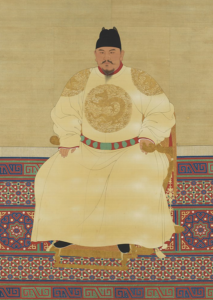
Taizuquan (太祖拳, Great Ancestor Boxing) is often segregated into the Zhao Taizu (referring to Zhao Kuangyin, First Emperor of the Song Dynasty) and Ming Taizu (referring to Zhu Yuanzhang, First Emperor of the Ming Dynasty). Whereas Zhao Taizuquan is often referred to as Chang Quan (太祖长拳, Long Boxing) and Ming Taizuquan is also known as Hong Quan (洪拳).
In Fujian, one of the oldest styles especially in the south (Min Nan) areas is referred to as Taizuquan, with a derivative style often noted as Wuzuquan (五祖拳). The main area of concentration of Taizuquan is in Zhangzhou, which is home to many different styles as well Hakka peoples and Quanzhou areas. There are in these areas alone of 20 different branches of Taizuquan (in this case referring to Southern Taizuquan).
Many of the participants of the various groups and activities were descendants from the previous imperial families. Some suggest to the earlier Hakka from Song period, whilst others perceive it from the Ming Dynasty. Although much of the boxing was derived from the North, the system had to be altered. These changes were meant to firstly deal with the different conditions in the Southern landscape compared to the Northern Central plains but more importantly to reduce the learning time so that members of such groups could grasp combat principles faster and more directly applicable within such a short period.
It is those early movements that combined aspects of Daoism, traditional culture, Ming imperialists, Hakka and like figures which set the stage for the development of a boxing system, Taizuquan. Much of the symbolism and practices associated with the southern martial arts are full of White Lotus/Red Turbans/Tiandihui traditions which are then from ancestors within Daoism and other religious/social movements of the past.Ming Taizu, Zhu Yuanzhang was a known leader of the Red Turbans ( 紅巾軍) also sometimes referred to the Ming Jiao, 明教), which was group descendant from the White Lotus Society (白莲教). After the fall of the Ming many headed southwards from Nanjing. In Southern Fujian and Guangdong province various movements occured which were commensurate with supporting a Ming return within the Manchurian led period of the Qing dynasty.
The Tiandihui ( 天地会, Heaven and Earth Society) was extremely prevalant in the Zhangzhou regions of Fujian aided by the Monk Wan Ti Xi (万提喜), who had recruited some locals Lu Mao, Li Amin and Fang Quan during the Qianlong Period (1711-1799), This movement also spread across nearby Zhangpu and Pinghe counties. The Tiandihui and the earlier Red turbans are related in 1854 were incidents commenced in Shilong village and spread across the South.
Taizuquan is suitable whether in its Song Taizu, Ming Taizu or even on the basis that it was to become Ancestral (where Taizu means Great/Primary ancestor) as one of the most representative of Fujian Boxing methods.
Taizuquan is the classical boxing method of the Quanzhou and Zhangzhou areas of Southern Fujian. One of the practitioners is said to be Ming loyalist, Zheng Li (郑礼). As a member of the anti Qing activities he practiced boxing methods is said to have simplified into effective methods that could be applied to develop others in the societies.
Development of Taizuquan
In the south of Fujian province, Taizuquan (and Wuzuquan) have become the most common form of boxing. There have been many different branches with much development as masters learned from many and added their experiences thereby resulting in a set of differing methods. The core however is the same and Taizuquan is often called Mu Quan (Mother Boxing) since it is so much the root or essence of the martial arts in the areas.
Early Taizu Quan
Since the Ming Dynasty in combating Coastal Pirates until the Qing Dynasty in supporting the resistance against the Manchurian led Qing dynasty, the Minnan areas of Fujian were involved in supporting local Militia. Skills had to imparted quickly and effectively leading to the development of a direct, combat ready martial arts system.
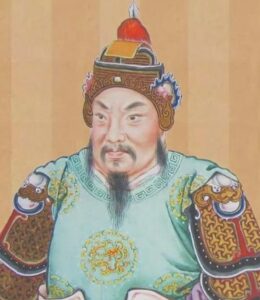
Yu Dayou (俞大猷 1503-1579)
Yu Dayou was born in Quanzhou (Luojiang Heshi village) but his ancestors were from Anhui. In 1535 he sat the imperial examinations and later obtained a position within the Imperial palace. He helped to defeat pirates that raided the coastlines of China (they also attacked Japanese and Korean coastlines) in Jiaxing, Zhejiang and as result was promoted Garrison Commander of Fujian. Alongside fellow Ming Generals Qi Jiguang (1528-1588) and Tan Lun (1520-1577), and over a number of different battles over the years eliminate the pirate threat by 1566. Yu Dayou’s concepts of martial arts emphasized “direct, powerful”, advancing with each step and using the force of the whole body in each strike”, these principles are commensurate with that of Taizuquan. He created his own militia with the the local people of Zhangzhou and Quanzhou, teaching them his effective military methods, able to skill them up quickly even making them more effective than the official soldiers from Zhejiang.
Yu Dayou wrote a classic《正氣堂集, Compilation of the methods from the Righteous Hall》that includes many great treatise on the martial arts (including a well known section, the Sword Classic). He was renowned for his Staff methods. It is said that in 1560, Yu Dayou travelled to the Shaolin Temple to research their renowned martial arts and staff methods. Unfortunately he was very disappointed as the monks were not skilled at all. As a result he brought two monks back to the South that followed him for three years to acquire his staff methods, which would become known as 《俞家棍, Yu Family Staff》until this day. In the South (Fujian/Guangdong), the staff would be the most commonly known weapon practiced in large arrays with up to hundreds of people in Zhangzhou, these are all thought to be legacies of Yu Dayou.
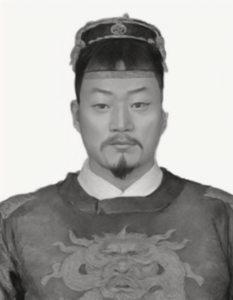
Zheng Chenggong (郑成功,1624-1662), was the son of Zheng Zhilong who was a pirate and merchant across the islands of japan, taiwan and off the fujian coast of China. His mother was Japanese (翁氏,1601-1646) but stayed in Japan due to regulations at the time. His father arranged for a good confucian education and later Zheng Chenggong moved to Quanzhou studying at the Nanjing Guozijian (University).
Later after the fall of the Ming dynasty he lead many troops from the Zhangzhou, Quanzhou and surrounding areas in attacks on the Qing forces often purged in defence with over 170,000 troops he lead expeditions all the way Northward to Nanjing city walls and then was forced to retreat with lack of supplies and inability to combat the large Qing armies. From the Xiamen areas he later established bases from which he later had expeditions to expel the dutch from Taiwan (they retreated to Indonesia). After great battles he died from malaria at a young age of only 38. Many of his troops and fellow rebels formed the resistance movements in the south of China which later became many of the various secret societies and martial arts practices that exist until today.
Wu Xin (悟心, 1691-1758) is one of the earliest recorded practitioner of Taizuquan in Quanzhou records. Wu Xin was said to be a monk residing at Dongchan Temple (东禅寺, Eastern Zen Temple) in Quanzhou and taught the style to lay disciples. Wu Xin was said to have studied from another monk who was an ex Ming empire loyalist and had converted to avoid persecution.
He Yang (何阳, 1795-1880) was originally from Yongding, Fujian province whom later opened a small Inn within the Yingzhou district of Zhangzhou. He was said to be a 3rd generation practitioner of the Taizuquan. In the later Qianlong period he later taught martial arts in Zhangzhou (where the martial hall is known as ‘Heyang Tang, 何陽堂’). His martial arts were renowned for hard power often described as ‘jing gang jing’ (Diamond hard power). Considered one of the Five Patriarchs of Zhangzhou martial arts. The handwritten medicine book “He Yangtang Injury Medicine and Surgery” passed down by Master He Yang is still completely preserved in the Tianfeng Martial Arts Hall in Longwen District. It is said that Master He Yang had thirteen first disciples in Zhangzhou, and all of them became famous after their skills were completed. Su Dashun, Cai Yuming and others were among the thirteen disciples. Su Dashun founded a martial arts school in Tianfeng Village, Longxi County during the Xianfeng period of the Qing Dynasty and taught He Yangquan and its equipment. The Taizu Quan style was also known as Wuzuquan or sometimes as Heyang Quan by latter practioners.
Quanzhou Taizuquan (In Quanzhou, the style of Taizuquan and Wuzuquan are often used interchangeably).
Li Junren (李俊仁, 1849-1933 ) had studied Taizuquan at the Dongchan Temple in Quanzhou (Today known as Shaolin Temple) and later returned to Yongchun County, where he also had practiced Baihequan (White Crane Boxing). Through efforts Li Junren also studied some Xuan Nu Quan, combined all the methods and as a result sometimes this line is known as Yongchun Taizuquan or Yongchun Wuzuquan. His martial legacy was left by the masters known as the ‘5 Yongchun Wuzu tigers who taught throughout Nanyang (South East Asia) which included Li Mao, Li Pu, Li Ba, Yan Qing and Gan Deyuan. With his most renowned disciple being his nephew Gan Deyuan.
Cai Yuming (蔡玉鸣, 1857-1910, fk. Chua Giok Beng)
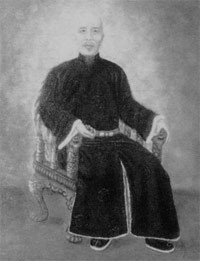
Cai Yuming was from Fangwei county, Fujian province. From a wealthy background which then allowed him to focus on his real interests in the martial arts. It is mentioned that he became a student of many boxing teachers and later a disciple of Taizuquan Master He Yang (何阳) in Zhangzhou and later through travels absorbed the techniques of many martial arts formulating Wuzuquan (五祖拳, 5 Ancestors Boxing) which he passed on to disciples after returning to Quanzhou where he opened martial arts schools. He Started two schools Longhui (龙会) and ShengGong (圣公).
Cai Yuming became the most renowned master in Quanzhou and the influence so strong that many Taizuquan masters took tutelage and adopted their teachings. It is for this reason that the Taizuquan and Wuzuquan traditions in Quanzhou later became so interelated as they shared the same core origin as well as developments.
Lin Jiuru (林九如 , 1862-1937, fk. Lim Kiu Lu)
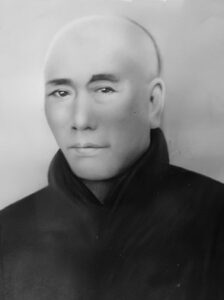
Lin Jiuru was prominent master of Taizuquan in Quanzhou and became a disciple of Cai Yuming in his later years after being defeated. As one of Cai Yuming’s earlier students he contributed much to the contents of the Wuzuquan and was prominent in promoting the style.
Given this background, Lin Jiuru had two series of students – the earlier sessions (Taizuquan) and the latter sessions (Wuzuquan), however many kept to the original Taizuquan name thereafter.
As prominent master in the Quanzhou area he had many students including his son Lin Tian’en (taught in Quanzhou city), Lu Wanding (taught in Zhangzhou, Shima and Xiamen), Miao Yue (Chongfu Temple, Quanzhou) and Lu Pengqi (Head of the Martial arts association in Quanzhou) amongst many others.
Shi Miaoyue (释妙月, 1883-1944, fk. Sek Miao Guat)
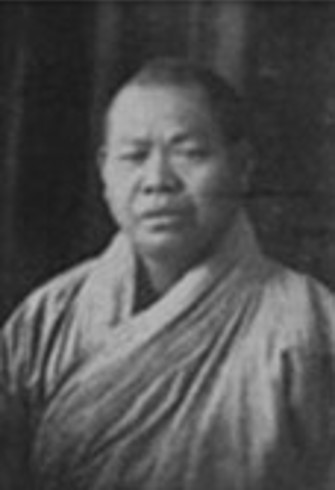
Venerable monk Miao Yue, laymen name was Shao Tenglang (邵腾朗), was from Anhai county, Quanzhou, Fujian Province.He had been fond of martial arts since his youth and studied Taizuquan with Master Chen Wenzhang. When he was 13 due to family difficulties, he became a monk but His Master monk passed within a year. He then left the temple and became a recluse at Zimao Mountain, Pujiang City for a while. It was there that by chance a master had passed by the temple and taught Miao Yue skills of Ying Qi Gong (External strength), Qing Gong (Lightness footwork/skills). When he was 16 he entered the Chongfu Temple in Quanzhou and was ordained by Monk Jue Ming. He studied Taizu Quan with Monk Liao Hua (仰华) at the Kaiyuan temple in Quanzhou. He continued studies in Taizuquan with Master Kun and later with Lin Jiuru (who was also a disciple of Cai Yuming and introduced Miao Yue to study directly).
With great capabilities and skills, he became later known as the Iron Luohan (铁罗汉), Miaoyue taught many students and novices. One of his most well known inheritors was Venerable Monk Yuanzhen (元镇, 1897-1977), who was adept at medicine, martial arts and scriptures, later known as the Gentle Luohan (绵罗汉). Yuanzhen’s disciples included Chang Qing (常青) in Quanzhou, Chang Kai (常凯, 1916-1990) in Singapore and Chang Jue (常觉) in Taiwan.
In Chongfu Temple which was used as a pharmaceutical production house during the 1970’s and 80’s has now been restored and the descendants of Miaoyue who have returned include Venerable Master Fuxin (福欣) amongst others who have been taught by fellow Taizuquan practitioners to restore back some of their skills lost.
Zhangzhou Taizuquan
Zhangzhou is home to some of the earliest practices of Taizuquan and generally for much of the boxing in Minnan (Southern Fujian Province), being also where the Tiandi Hui (Heaven and Earth Society) and Hong Men (Hong Society) commenced their activities. Whilst there are many different schools of Taizuquan, the are three main Tang (Halls) of Taizuquan in Zhangzhou.
Study Skills Hall
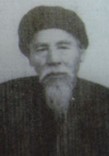
Kang Guanghui (康光辉, 1889-1973) was born in Longhai, Zhangzhou. Although born in difficult conditions as his father passed away whilst he was still a child, he arduously studied martial arts from youth under various teachers, including Fang Hua (方杷 his father in law) and Zhang Cai (张财). He later was fortunate to receive tutelage from Taizu boxer Kang Shouzhai (康守斋), who imparted him both martial arts and medical skills. He also talk tutelage from Fang Baida in Nei Gong (internal Development), Qing Gong (Lightness Skills), Herbal Medicine and Chinese Bone setting skills.
He later commenced the Xiyi Tang (习艺堂 ,Study Skills Hall) in Gutang, offering medical services and teaching Taizuquan. His skills became wide spread across the Zhangzhou areas of Longhai, Xiangcheng and Longwen where it was said that from young and old, boys or girls over a thousand villagers practiced Taizuquan. The Xiyi Tang was established on the basis that practicing martial arts enhances virtue, with its insriptions as “文明文德知天下,武艺武成定太平” – Proper conduct and virtue allows the wisdom to know all under heaven, martial skills shall ensure eternal Peace (Taiping).
When the Zhangzhou villages of Gutang and Yuekou had schools that were originally taught by Zhang Yanghua (White Crane Boxing) from Jieyuan Hall to enhance the Lion Dancing traditions, other boxing teachers were invited as well, Kang Guanghui was one held with much praise. Kang Guanghui in 1930’s travelled to Hong Kong and later throughout South East Asia (Hong Kong, Indonesia, Taiwan, Singapore and Malaysia), practicing medicine and teaching the marital arts. The Zhangzhou Taizuquan style became seeded in those areas as much as in its hometowns across Zhangzhou. He returned many years later in 1940’s settling under the Xueyi Hall, where he helped those in need and taught Taizuquan until his late years. Some of the most notable include his son Kang Shouling, Chen Wanqing (Ah Bao) and Ceng Mu.
Thus this school combined the footwork of lion dancing, the fundamentals of white crane and the boxing of Taizuquan. In terms of contents some of the sets include Da/Xiao Simen (Large/Small 4 gates), Wubu (5 steps), Bagua Shizi (8 Trigrams Intersecting set), Bagua Wei (8 Trigrams tail), Lian Zhi Quan (Lotus Leaf Boxing), Fei Feng Quan (Flying Phoenix Boxing), Luohan Quan (Arhat Boxing) and Yanzi Chaoshui (Swallow scoops over water).
Martial Skills Hall
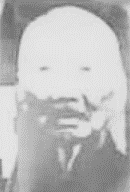
Wuyi Tang (武艺堂, Martial Skill Hall), descends from the teachings of Yongding Master Yu rulong (徐如龙. 1882-1953, also known as Yu Jiangong), who had studied Taizu Quan with Master Chen Chimi (陈赤米) from Dong’an village in Yongding, then continued his studies with uncle Huang Dianrong from Liancheng, whom became Yu Rulong’s adopted father. In the early 1930’s, Cai Shenghe was trying to establish a martial arts training centre and had invited the well known Baihe Quan (白鹤拳, White Crane Boxing) Master named Zhang Yanghua who was from Jie Yuan Tang (捷元堂 – other Zhangzhou martial arts hall practicing Baihequan).
Instead it was Yu Rulong was later also asked to become a coach and taught many of Cai Shenghe’s family and other disciples such as Cai Yahuo (蔡亚火), Cai Chuncheng (蔡春成), Cai Yuanha、(蔡圆蛤), Cai Tianyuan (蔡添元), Cai Zonglin (蔡宗麟) and Cai Kunyu (蔡坤雨). The contents of this style although considered Taizuquan are quite different to the other two. Some of the sets include Shao Chengmen (Lesser city walls), Da Chengmen (Greater city walls), San Lianbu (3 adhered steps), Si Lianbu (4 adhered steps), Wu Hu Xia Shan (5 tigers descend mountain) and Qixing Luodi (7 stars fall to earth).
Twin Ascending Dragon Hall
Shiwei Wushuguan (漳州市尾武术馆, Shiwei Martial Arts Institute), with its Tang name – Shuangfa Denglong Tang (双发登龙堂, Twin ascending dragon hall) has a history of over 150 years. The originator of this school was You Qinglong (游青龙), a Hakka Chinese. At the time, There was a young man called You Hongying (游红婴) who alongside a few other villagers studied Heyang Quan. After an incident when You Qinglong was passing town, You Hongqing begged to be taught by Qinglong. Later all those villages became disciples of You Qinglong. These were in You Hongying, You Yangyi (游养宜), You Bishan (游碧山)、You Suye (游宿夜) and another two whose real names were not recorded only their aliases Ai Guming and Gu Zhuichen.
Later followers or generations of the style included You Changchun, You Tiansen, You Fengyuan and so on. The contents of the style include fundamental sets such as Tou Jie (head section), Tou Jie Fan Quan (Head section opposing fists), Er Jie (two sections), Er Jie Fan (Opposing two sections) and Ziwu Quan (Meridianal Boxing). Intermediate sets are Lianhuan Bagua Quan (Continuous 8 trigrams set), Wai Bagua Quan (Outer 8 trigrams Boxing) and Liu Qing Quan (Flowing Essence boxing). Advanced sets include San Jiao Hu Quan (3 legged Tiger Boxing), Milefo Xiandu Quan (Matreiya Buddha offers belly Boxing) and Qiuyin Fansha Quan (Earthworms turning the sand Boxing).
Taizuquan in South East Asia (Singapore, Malaysia, Indonesia and the Philippines)
Gan Deyuan (1884-1946,干德源 fk. Kan Teck Guan)

Gan Deyuan was born in Yongchun county, Fujian province and later migrated to Singapore. He was an expert of both martial arts and medicine. His martial arts were studied from his uncle (aunty’s husband) Li Junren (李俊仁) who had practiced from the Cai Yuming line as well as from the martial arts descendant from Wu Xin (悟心) who taught martial arts at the Dongchan temple (东禅寺) in the 1730’s. This school was sometimes referred to as Yongchun Wuzuquan or Yongchun Taizuquan (永春太祖拳). In the early 1900’s he moved to Singapore and established a hall for the practice of medicine and teaching of martial arts in 1916. Later he opened other schools in Kuala Lumpur (1918) and Malacca (1927).
During the Japanese occupation of Singapore (1942-1945) people lived in much dificulty and Master Gan helped by offering medical treatment. He taught many including his children Gan Huhai (干湖海), Gan Huchang (干湖昌) and Gan Hunan (干湖南), as well as disciples Lin Baoshan (林宝山), Li Shaomao (李绍茂), Lin Banghua (林邦华) and Wu Longfei (吴龙飞). Master Gan Huchang opened the Zhonghua martial arts school in 1966, which became the Zhonghua Martial Arts Athletic Association in 1988 and today the Zhonghua Sports Club located in Chinatown, Singapore.
Shen Yangde (1881-1964 沈扬徳, fk. Sim Yong Tik )
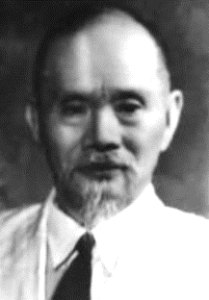
Shen Yangde was from Nan An county, Fujian and migrated to Singapore in the 1930’s. As the last inner door disciple of Cai Yuming, it is sometimes thought that Shen Yangde absorbed the more completed aspect of the style (earlier years were formulative).
Shen was very active and managed to promoted the style in Xiamen, Xia’an county, Quanzhou, Singapore, Indonesia and even Myanmar. He taught many and in Xin’an established the Heyang Martial arts Institute.
In Singapore, his main disciple was Li Hexiang and Xu Naijing (1917-1997) who established the Beng Seng Pugilism & Physical Culture Institute which is still active today. This school was often referred to as Wuzu Heyang Quan (五祖鹤阳拳). This style is characterized by more internalization and vibrating than the direct mentality of earlier lines.
Guo Xionghu (郭雄虎, 1901-1994 , fk. Quek Hiong Haw)
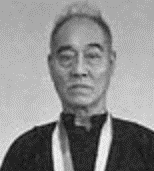
Guo Xionghu studied with Cao Biao (曹彪) and then later Taizuquan with Wen Chaogu (翁朝古), as well as other boxing styles. He later moved to South East Asia and had many times proven his great skills including challenging a famed Thai boxer in Thailand to a challenge which he won to much acclaim.
In 1945, he moved to Singapore and taught there. In 1967 at the national tournament at an advanced age of 66 managed to win the empty hand championship and runner up in weapons.
In Singapore, his most notable disciple, Zhao Chunde (赵春德, fk. Teo Choon Teck) established the San Cheen Do (Way of 3 battles) school which combined Taizu with other martial arts.
Lu Wanding (卢万定,1886 -1958, fk Lo Ban Teng)
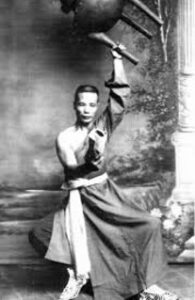
Lu Wanding was originally from Zhangzhou, Fujian whose family ran a Liquor business and was born with a natural talent for martial arts. When he was 23 years old he commenced the study of Wuzuquan with a store owner, You Junan (尤俊岸) who was a disciple of Cai Yuming. Lu Wanding helped with the running of his family Liquor business and had to travel frequently to neighbouting areas such as Xiamen and Quanzhou. At the introduction of his teachers he studied with martial uncles Wei Yinnan (魏隐南), Weng Chaoyan (翁朝言) in Xiamen and with Lin Jiuru (林九如) in Quanzhou.
In 1927 Lu Wanding moved to Indonesia where he practiced medicine and taught martial arts. He was known not only for his physical strength but also for his direct, honest and hard to everyone equalitarian character. Lu was the most influential figure in establishing Cai’s style Wuzuquan in Indonesia. One prime emphasis of his lineage is to breathe right to develop a hard blow as well as the ability to bear the hard blow of an opponent. During his whole life, Lu deepened his martial arts by watching attack and defense behaviors of domestic animals, such as roosters, in fights. Among Lu’s most notable successors are his sons Lu Xiaohe and Lu Xiaojun, and also his first student and nephew Lin Cuigang (林粹刚 1896-1966 fk Lim Tjoei Kang), who is also an adopted son of Shen Yangde.
Chen Jingming (陈京铭, fk. Tan Kiong Beng)
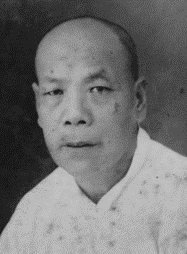
Another notable master was Cai Yuming’s disciple who took Wuzuquan to the philippines and started the Beng Kiam club. was one of the top ten disciples of Cai Yuming. Chen was a wealthy merchant who moved to the Philippines in 1900 and made a living as a bone setter.
Soon after the overseas Chinese in Manila became aware of his credentials and sought him out for teaching martial arts. However in his retirement Chen sought to return home to Fujian and as a result sent his son, Tan Kahong who with some his father’s disciples jointly established the Beng Kiam school in 1935. Chen Jingming (陈京铭, fk. Tan Kiong Beng) was one of the top ten disciples of Cai Yuming. Chen was a wealthy merchant who moved to the Philippines in 1900 and made a living as a bone setter. The school left a legacy through Tan Kahong’s disciples such as Benito Tan, Alex Co, Daniel Go, Tony Lim, Jose Ang, Bonificiado Lim and Ben Asuncion.
Lu Yanqiu (卢言秋, 1878-1944, fk. Lo Gian Chiu)
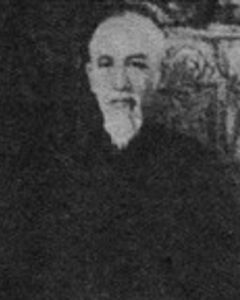
Lu Yanqiu was born in Quanzhou. He started at age 14 studying martial arts with Master Zhuang Dan (庄胆), then he became a disciple of Gong Pozhan (公婆詹), of the Taizuquan/Wuzuquan style. He also met Cai Yuming and his disciples Lin Jiuru, Chen Jingming and others. After only 5 years of intense training, Lu Yanqiu opened his school in 1897 at Wei Tou village, instructing in martial arts and offering medical services.
In 1899. he traveled overseas over nine years to countries including Burma (Myanmar), Malaysia, Indonesia, Hong Kong, Vietnam and Singapore. He gained great experience and in 1909 returned to Quanzhou. During the turbulent years of 1910-1912, Lu Yanqiu was involved in the nationalist movement hacing served as combat instructor and medical officer for a regimen of the army.
In 1937, the Sin-Japanese ware commenced and by urging of his students given his advanced age he was requested to move to Manila by his students. In 1938, Lu Yanqiu setup the Kong Han Athletic Club and taught there. In 1942, Japanese forces occupied Manila which was to end only in 1944 at which time Lu Yanqiu also passed away. His successor would be his eldest son Lu Qinghui (卢庆辉).
Taizuquan Curriculum
Taizuquan (Great Ancestor Boxing) is a very thorough system of combat and requires the development of skills across the full human arsenal. In Taizuquan, the forms (or sets) act as the series of training methods and thereby important to the development of the skills within the style. Additional, the general basics and training within Taizuquan includes many different aspects that are continuously developed over the training period consecutively with the study of structure and forms. These aspects are categorized as follows:
- Strikes and kicks, in shadow, against pads and bags and with weight locks
- Grappling and locking methods, inclusive of counters and reversals
- Techniques including timing and knocking exercises with opponents
- Bridging and trapping methods, including use of the joints and extremities
- Power development and generation
- Double striking, kneeling and ground techniques
The boxing sets within Taizuquan are many and varied. There are literally hundreds in existence with each school or branch having their own series. Even when names are similar the execution, techniques and power can also differ. The sets are typically short, compact and encompass only a few key concepts within, each adding onto the knowledge of the previous or introducing new techniques. The sets within our curriculum are from Miao Yue Quanzhou Taizuquan and Xueyi Tang Zhangzhou Taizuquan.
The Zhan (Battle) forms are designed to assist with the practice of power generation within Taizuquan. Whilst Sanzhan is the heart oi Taizuquan, The three most practice battle forms are San Zhan, Wuhu Zhan and Tiandiren Zhan. These are not practiced consecutively but rather introduced as specific points throughout training on general boxing methods.
| San Zhan (三战 3 Battles) Zhima Zhan (直马战 straight Step Battle) Tian zi Zhan (天字战 ‘天’ shape Battle) Pingma Zhan (平马战 Level Horse Battle) Shizi Zhan (十字战 Cross Battle) | Wuhu Zhan (五虎战 5 Tiger) Tiandiren Zhan (天地人战 Heaven, Earth & Man) Fengwei Zhan (凤尾战 Pheonix Tail) Ruihua Zhan (瑞华战 Elegant Battle) Longtou Zhan (龙头战 Dragon head Battle) |
These are the compulsory components of Taizuquan ranging from the very simple to the more intricate of methods.
| Ershi Quan (二十拳 20 strikes) Xiao Simen (小四门 Small 4 Gates) Zhong Jie (四门中节 Central Section) Da Simen (大四门 Large 4 Gates) Simen Dajiao (四门打角 Angled 4 gates) | Wubu Quan (五步拳 5 Steps Fists) Zhong Guan (中管 Controlling the centre) Lianhua Quan (莲花拳 Lotus Fists) Shuang Sui (双绥 Double Banner) Shuang Yao (双摇 Double Shake) | Chen Tou (沉头 Press/hit the head) Qibu Lianzhi (七步连枝 7 step linked stems) Gan Qie (甘剪 Dare to Cut) Ziwu Quan (子午拳 Cycle Fists) Shiba Bu (十八步 18 Steps) |
Once the essential methods have been mastered there are a range of specialized practices (each usually focusing on key set of principles/methods).
| Haidi Chuanzhen (海底穿针 Needle in the Ocean) Lianhuan Bagua (连环八卦 Continuous 8 Trigrams) Shuang Bian (双鞭 Double whips) Yin Teng Ti (茵藤踢 Entwining kick) Hai er Bao (孩儿抱 Embrace Child) Qianzi Da (千字打 ‘千’ Character Striking) | Tou Zha (头札 First Scroll) Er Zha ( 二 札 Second Scroll) San Zha (三札 Third Scroll) Si Zha (四札 Fourth Scroll) Wu Zha (五札 Fifth Scroll) | Luohan Quan (罗汉拳 Arhat) Fei Feng (飞凤 Flying Phoenix) Qing Feng (清风 Cool Breeze) Tian Gang (天罡 Heavenly Spirits) Di Sha (地煞 Earthly Fiends) Lian Cheng (连成 Liancheng method) |
Combat Sets
Many of the sets in Taizuquan can also be practiced in combination as a 2-man set.
Weapons
There are over 25 weapons, the staff is prominent, some are listed below:
| 五步棍 5 step staff 四门棍 4 gates staff 齐眉棍 eyebrow height staff 盘龙棍 coiling dragon staff 太祖棍 taizu staff 行者棍 wander’s staff 俞家棍 Yu family staff 七尺棍 Long 2.1m staff 丈二槌 Long 3.6m staff | 方天戟 Halberd 大扒 Big Trident 月斧 Moon axe 開山斧 Long handled Axe 青龍大刀 Green Dragon Long Saber 单刀 Saber 玉女剑 Jade Maiden Sword 短槌 Short Staff | 关刀 Kwan Kung’s Long Saber 双头槌 Two headed Staff 梅花枪 Plum Blossom Spear 雙刀Double Sabers 双鞭 Double Hard Rods/Sai 柳公拐 Crutch 双斧 Double Axes |
